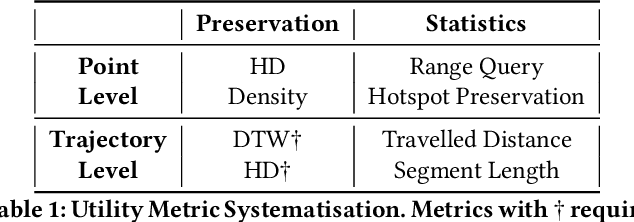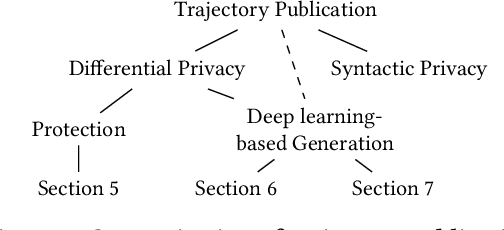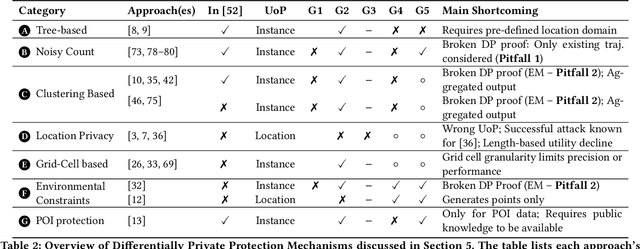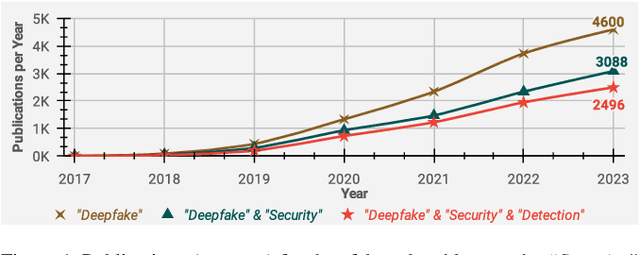Alsharif Abuadbba
Adversarial Attacks Against Automated Fact-Checking: A Survey
Sep 10, 2025Abstract:In an era where misinformation spreads freely, fact-checking (FC) plays a crucial role in verifying claims and promoting reliable information. While automated fact-checking (AFC) has advanced significantly, existing systems remain vulnerable to adversarial attacks that manipulate or generate claims, evidence, or claim-evidence pairs. These attacks can distort the truth, mislead decision-makers, and ultimately undermine the reliability of FC models. Despite growing research interest in adversarial attacks against AFC systems, a comprehensive, holistic overview of key challenges remains lacking. These challenges include understanding attack strategies, assessing the resilience of current models, and identifying ways to enhance robustness. This survey provides the first in-depth review of adversarial attacks targeting FC, categorizing existing attack methodologies and evaluating their impact on AFC systems. Additionally, we examine recent advancements in adversary-aware defenses and highlight open research questions that require further exploration. Our findings underscore the urgent need for resilient FC frameworks capable of withstanding adversarial manipulations in pursuit of preserving high verification accuracy.
LLMs Are Not Yet Ready for Deepfake Image Detection
Jun 12, 2025Abstract:The growing sophistication of deepfakes presents substantial challenges to the integrity of media and the preservation of public trust. Concurrently, vision-language models (VLMs), large language models enhanced with visual reasoning capabilities, have emerged as promising tools across various domains, sparking interest in their applicability to deepfake detection. This study conducts a structured zero-shot evaluation of four prominent VLMs: ChatGPT, Claude, Gemini, and Grok, focusing on three primary deepfake types: faceswap, reenactment, and synthetic generation. Leveraging a meticulously assembled benchmark comprising authentic and manipulated images from diverse sources, we evaluate each model's classification accuracy and reasoning depth. Our analysis indicates that while VLMs can produce coherent explanations and detect surface-level anomalies, they are not yet dependable as standalone detection systems. We highlight critical failure modes, such as an overemphasis on stylistic elements and vulnerability to misleading visual patterns like vintage aesthetics. Nevertheless, VLMs exhibit strengths in interpretability and contextual analysis, suggesting their potential to augment human expertise in forensic workflows. These insights imply that although general-purpose models currently lack the reliability needed for autonomous deepfake detection, they hold promise as integral components in hybrid or human-in-the-loop detection frameworks.
What is the Cost of Differential Privacy for Deep Learning-Based Trajectory Generation?
Jun 11, 2025Abstract:While location trajectories offer valuable insights, they also reveal sensitive personal information. Differential Privacy (DP) offers formal protection, but achieving a favourable utility-privacy trade-off remains challenging. Recent works explore deep learning-based generative models to produce synthetic trajectories. However, current models lack formal privacy guarantees and rely on conditional information derived from real data during generation. This work investigates the utility cost of enforcing DP in such models, addressing three research questions across two datasets and eleven utility metrics. (1) We evaluate how DP-SGD, the standard DP training method for deep learning, affects the utility of state-of-the-art generative models. (2) Since DP-SGD is limited to unconditional models, we propose a novel DP mechanism for conditional generation that provides formal guarantees and assess its impact on utility. (3) We analyse how model types - Diffusion, VAE, and GAN - affect the utility-privacy trade-off. Our results show that DP-SGD significantly impacts performance, although some utility remains if the datasets is sufficiently large. The proposed DP mechanism improves training stability, particularly when combined with DP-SGD, for unstable models such as GANs and on smaller datasets. Diffusion models yield the best utility without guarantees, but with DP-SGD, GANs perform best, indicating that the best non-private model is not necessarily optimal when targeting formal guarantees. In conclusion, DP trajectory generation remains a challenging task, and formal guarantees are currently only feasible with large datasets and in constrained use cases.
H-FLTN: A Privacy-Preserving Hierarchical Framework for Electric Vehicle Spatio-Temporal Charge Prediction
Feb 25, 2025Abstract:The widespread adoption of Electric Vehicles (EVs) poses critical challenges for energy providers, particularly in predicting charging time (temporal prediction), ensuring user privacy, and managing resources efficiently in mobility-driven networks. This paper introduces the Hierarchical Federated Learning Transformer Network (H-FLTN) framework to address these challenges. H-FLTN employs a three-tier hierarchical architecture comprising EVs, community Distributed Energy Resource Management Systems (DERMS), and the Energy Provider Data Centre (EPDC) to enable accurate spatio-temporal predictions of EV charging needs while preserving privacy. Temporal prediction is enhanced using Transformer-based learning, capturing complex dependencies in charging behavior. Privacy is ensured through Secure Aggregation, Additive Secret Sharing, and Peer-to-Peer (P2P) Sharing with Augmentation, which allow only secret shares of model weights to be exchanged while securing all transmissions. To improve training efficiency and resource management, H-FLTN integrates Dynamic Client Capping Mechanism (DCCM) and Client Rotation Management (CRM), ensuring that training remains both computationally and temporally efficient as the number of participating EVs increases. DCCM optimises client participation by limiting excessive computational loads, while CRM balances training contributions across epochs, preventing imbalanced participation. Our simulation results based on large-scale empirical vehicle mobility data reveal that DCCM and CRM reduce the training time complexity with increasing EVs from linear to constant. Its integration into real-world smart city infrastructure enhances energy demand forecasting, resource allocation, and grid stability, ensuring reliability and sustainability in future mobility ecosystems.
ThreatModeling-LLM: Automating Threat Modeling using Large Language Models for Banking System
Nov 26, 2024Abstract:Threat modeling is a crucial component of cybersecurity, particularly for industries such as banking, where the security of financial data is paramount. Traditional threat modeling approaches require expert intervention and manual effort, often leading to inefficiencies and human error. The advent of Large Language Models (LLMs) offers a promising avenue for automating these processes, enhancing both efficiency and efficacy. However, this transition is not straightforward due to three main challenges: (1) the lack of publicly available, domain-specific datasets, (2) the need for tailored models to handle complex banking system architectures, and (3) the requirement for real-time, adaptive mitigation strategies that align with compliance standards like NIST 800-53. In this paper, we introduce ThreatModeling-LLM, a novel and adaptable framework that automates threat modeling for banking systems using LLMs. ThreatModeling-LLM operates in three stages: 1) dataset creation, 2) prompt engineering and 3) model fine-tuning. We first generate a benchmark dataset using Microsoft Threat Modeling Tool (TMT). Then, we apply Chain of Thought (CoT) and Optimization by PROmpting (OPRO) on the pre-trained LLMs to optimize the initial prompt. Lastly, we fine-tune the LLM using Low-Rank Adaptation (LoRA) based on the benchmark dataset and the optimized prompt to improve the threat identification and mitigation generation capabilities of pre-trained LLMs.
A Constraint-Enforcing Reward for Adversarial Attacks on Text Classifiers
May 20, 2024Abstract:Text classifiers are vulnerable to adversarial examples -- correctly-classified examples that are deliberately transformed to be misclassified while satisfying acceptability constraints. The conventional approach to finding adversarial examples is to define and solve a combinatorial optimisation problem over a space of allowable transformations. While effective, this approach is slow and limited by the choice of transformations. An alternate approach is to directly generate adversarial examples by fine-tuning a pre-trained language model, as is commonly done for other text-to-text tasks. This approach promises to be much quicker and more expressive, but is relatively unexplored. For this reason, in this work we train an encoder-decoder paraphrase model to generate a diverse range of adversarial examples. For training, we adopt a reinforcement learning algorithm and propose a constraint-enforcing reward that promotes the generation of valid adversarial examples. Experimental results over two text classification datasets show that our model has achieved a higher success rate than the original paraphrase model, and overall has proved more effective than other competitive attacks. Finally, we show how key design choices impact the generated examples and discuss the strengths and weaknesses of the proposed approach.
An Investigation into Misuse of Java Security APIs by Large Language Models
Apr 04, 2024



Abstract:The increasing trend of using Large Language Models (LLMs) for code generation raises the question of their capability to generate trustworthy code. While many researchers are exploring the utility of code generation for uncovering software vulnerabilities, one crucial but often overlooked aspect is the security Application Programming Interfaces (APIs). APIs play an integral role in upholding software security, yet effectively integrating security APIs presents substantial challenges. This leads to inadvertent misuse by developers, thereby exposing software to vulnerabilities. To overcome these challenges, developers may seek assistance from LLMs. In this paper, we systematically assess ChatGPT's trustworthiness in code generation for security API use cases in Java. To conduct a thorough evaluation, we compile an extensive collection of 48 programming tasks for 5 widely used security APIs. We employ both automated and manual approaches to effectively detect security API misuse in the code generated by ChatGPT for these tasks. Our findings are concerning: around 70% of the code instances across 30 attempts per task contain security API misuse, with 20 distinct misuse types identified. Moreover, for roughly half of the tasks, this rate reaches 100%, indicating that there is a long way to go before developers can rely on ChatGPT to securely implement security API code.
SoK: Can Trajectory Generation Combine Privacy and Utility?
Mar 12, 2024



Abstract:While location trajectories represent a valuable data source for analyses and location-based services, they can reveal sensitive information, such as political and religious preferences. Differentially private publication mechanisms have been proposed to allow for analyses under rigorous privacy guarantees. However, the traditional protection schemes suffer from a limiting privacy-utility trade-off and are vulnerable to correlation and reconstruction attacks. Synthetic trajectory data generation and release represent a promising alternative to protection algorithms. While initial proposals achieve remarkable utility, they fail to provide rigorous privacy guarantees. This paper proposes a framework for designing a privacy-preserving trajectory publication approach by defining five design goals, particularly stressing the importance of choosing an appropriate Unit of Privacy. Based on this framework, we briefly discuss the existing trajectory protection approaches, emphasising their shortcomings. This work focuses on the systematisation of the state-of-the-art generative models for trajectories in the context of the proposed framework. We find that no existing solution satisfies all requirements. Thus, we perform an experimental study evaluating the applicability of six sequential generative models to the trajectory domain. Finally, we conclude that a generative trajectory model providing semantic guarantees remains an open research question and propose concrete next steps for future research.
A Generative Adversarial Attack for Multilingual Text Classifiers
Jan 16, 2024Abstract:Current adversarial attack algorithms, where an adversary changes a text to fool a victim model, have been repeatedly shown to be effective against text classifiers. These attacks, however, generally assume that the victim model is monolingual and cannot be used to target multilingual victim models, a significant limitation given the increased use of these models. For this reason, in this work we propose an approach to fine-tune a multilingual paraphrase model with an adversarial objective so that it becomes able to generate effective adversarial examples against multilingual classifiers. The training objective incorporates a set of pre-trained models to ensure text quality and language consistency of the generated text. In addition, all the models are suitably connected to the generator by vocabulary-mapping matrices, allowing for full end-to-end differentiability of the overall training pipeline. The experimental validation over two multilingual datasets and five languages has shown the effectiveness of the proposed approach compared to existing baselines, particularly in terms of query efficiency. We also provide a detailed analysis of the generated attacks and discuss limitations and opportunities for future research.
SoK: Facial Deepfake Detectors
Jan 09, 2024



Abstract:Deepfakes have rapidly emerged as a profound and serious threat to society, primarily due to their ease of creation and dissemination. This situation has triggered an accelerated development of deepfake detection technologies. However, many existing detectors rely heavily on lab-generated datasets for validation, which may not effectively prepare them for novel, emerging, and real-world deepfake techniques. In this paper, we conduct an extensive and comprehensive review and analysis of the latest state-of-the-art deepfake detectors, evaluating them against several critical criteria. These criteria facilitate the categorization of these detectors into 4 high-level groups and 13 fine-grained sub-groups, all aligned with a unified standard conceptual framework. This classification and framework offer deep and practical insights into the factors that affect detector efficacy. We assess the generalizability of 16 leading detectors across various standard attack scenarios, including black-box, white-box, and gray-box settings. Our systematized analysis and experimentation lay the groundwork for a deeper understanding of deepfake detectors and their generalizability, paving the way for future research focused on creating detectors adept at countering various attack scenarios. Additionally, this work offers insights for developing more proactive defenses against deepfakes.
 Add to Chrome
Add to Chrome Add to Firefox
Add to Firefox Add to Edge
Add to Edge